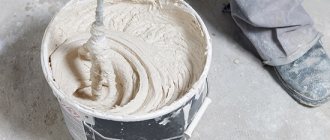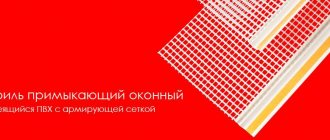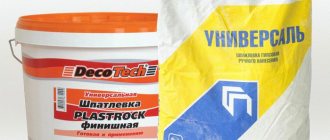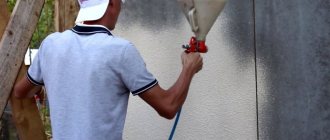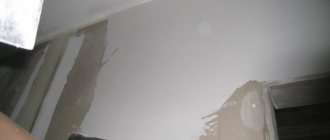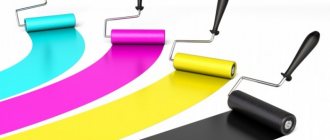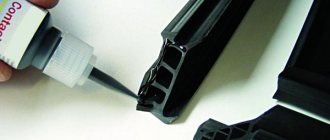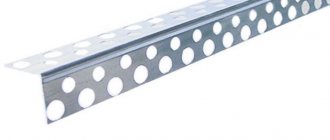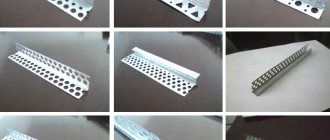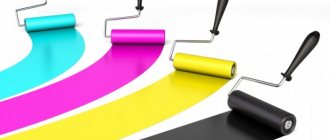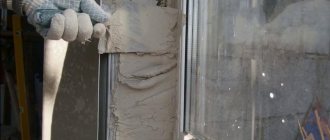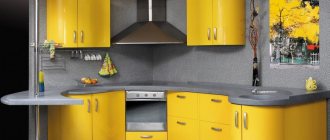11589 0 5
MesterulManole June 13, 2017Specialization: many years of experience in finishing works of residential and office premises, dachas, country cottages, etc. Hobby: cycling in all its forms
Do not rush to throw away damaged plastic body parts ahead of time, because they are easy to straighten
Don't know how to level a plastic surface before painting? I will tell you what and how to putty plastic in order to achieve a perfectly flat, durable surface. After reading the article, you can choose the appropriate composition and independently apply it for its intended purpose.
Technology of use
Due to their constant contact with road abrasives, paint chips, scratches and even dents begin to appear on them.
Regardless of the reasons for their appearance, such unevenness requires elimination, which, due to its properties, cannot be provided by ordinary putty.
Experts place the following requirements on plastic putty:
- elasticity;
- adhesion to any type of plastic used in the automotive industry;
- impact resistance;
- Possibility of manual sanding.
Pliable plastic, on which a layer of special putty will be applied, will be less susceptible to various kinds of mechanical shocks, which could lead to the formation of small dents and chips.
You should be aware that most mixtures for plastic recovery are not allowed to be used on:
- one-component acrylic materials;
- nitrocellulose;
- thermoplastic materials;
- reactive primers.
Novol-putty for plastic Bumper-Fix 0.5 kg
Putty for plastic car components is produced in two-component formulations. They are formed by mixing a polyester resin base with an activator in a ratio of approximately 5:100.
Next, the putty is applied to the area of the car using a spatula and leveled. After drying, which can be done in a garage without the use of UV radiation, the surface of the car is sanded with coarse-grained sandpaper and then with fine-grained sandpaper.
Although it is written on the packaging that plastic putty can be used as a starting and finishing compound, experts recommend using additional mixtures to bring the surface of the car to a perfectly smooth state.
In this case, liquid putties that are quite elastic are suitable. They form a thin layer on the plastic and do a good job of closing microcracks.
Manufacturers
Many manufacturers make putties for plastics. Among them:
- Otrix . A series of putties for automotive parts made of plastic from a Polish manufacturer. Almost the most affordable product in the segment.
Otrix finishing putty Finish 1.0kg
- SolidFlex . Allows you to putty the car surface in one approach, filling microcracks in the plastic. The composition hardens well on the surface, which reduces the percentage of adhesion of abrasive particles, and also reduces “springing” during further grinding. A precisely selected amount of fillers ensures the easiest sanding process. The composition is presented in gray color. It begins to harden at room temperature after just 5 minutes and dries in up to half an hour. Used to correct imperfections in areas of soldering or gluing of plastic components.
Plastic putty Solid Flex, 0.21 kg
- APP Flex Poly-Plast. This two-component mixture contains polyester, due to which it is characterized by high elasticity and mechanical strength. Bonds well to the surface of standard plastics used in car construction. Protects the body from the effects of solvents, acids or alkaline solutions.
Plastic putty APP FLEX POLY-PLAST, 1.8 kg
- MasticPlast. Apply a thin layer as a finishing putty. It is made on the basis of polyester resin and has a dark gray color. The kit includes RVO hardener. When you need to provide special protection and durability, it is better to apply the product over an epoxy primer. Do not use putty on thermoplastic or wash primer.
- Chamaeleon. The putty from this company is flexible enough for application to plastic and further sanding. Suitable for use on polyurethane, polypropylene, RA, PVC, acrylonitrile. Environmentally friendly. Up to 3% hardener is added to the composition and mixed. Then the mixture is applied to the plastic within a few minutes and dried for 20-30 minutes.
Plastic putty Chamaleon 507 Spachtel Super Flex, 1kg
- Sprint . Products from this company are applied to any type of plastic, except polyethylene. They have low density. Thus, the final weight of car parts practically does not increase.
Putty for plastic Sprint, 0.7 kg
How to prepare the product yourself?
To putty plastic, it is not necessary to use a ready-made product. You can make the composition yourself.
Necessary materials
To prepare the product you will need: • acetone; • Styrofoam; • talc; • clean container; • wooden stick for stirring.
Cooking method
Algorithm for preparing the product: • break the foam into small pieces and place in a container (as in the photo below); • add acetone; • leave the product until the foam dissolves; • stir the material, add talc and stir again; • use the composition immediately for its intended purpose, otherwise the mixture will dry out.
Paintable putty for plastic (putty for plastic)
Putty for plastic allows you to eliminate unevenness and chips on the surface of such products. The material is characterized by a high level of adhesion, dense structure, simple application and sanding. The list of popular varieties includes filling, universal, and acrylic products.
Types of putties
Plastic putty is a material for leveling surfaces and removing dents and cracks. The composition has good adhesion, has increased strength and can be used to protect plastic products from mechanical damage. It must be taken into account that putty is available in different types depending on the method of use and the quality of the components.
By method of application
- contain coarse granules. The product can quickly correct unevenness. The surface acquires a rough texture. The mass is recommended to be used as an intermediate layer before decorative coating. Using a building mixture, you can create a new relief on the surface.
- contain fine-grained fractions. The material is applied in a thin layer, sanded easily and quickly after hardening, forming a smooth coating. Finishing mixtures are finishing. After correcting the defects, the coating will acquire a dense structure.
- designed for cosmetic repairs by professional specialists. It contains mid-fraction granules. The mixture is used to level and eliminate defects on the surface. The mass is used for any repair and finishing work.
By composition
- One-component products are made on the basis of acrylates. After drying, an even, smooth coating is formed. These compositions are odorless, environmentally friendly, and are offered by manufacturers in finished form. Acrylic putty mixture is easy to apply and affordable. However, the strength indicators are average.
- two-component compositions are characterized by rapid hardening (within 1-2 hours), then the coating can be processed. The material has slight shrinkage, so puttying of plastic can be done in a dense layer of up to 0.5 cm. However, when drying, it is necessary to ventilate the room due to the unpleasant odor of the material. The mass is easy to apply and sand. Polyester products are expensive.
- two-component. The material contains resinous and granular substances and a hardener. Such plaster mixtures are harmless after drying. Work with these compounds is carried out in ventilated areas. The advantage of the mixture is increased strength, easy processing, and no shrinkage. The cost of epoxy putty is high.
- belong to leveling compositions, contain fillers (talc, kaolin powder, etc.), nitro-binding components. Putty mixtures are applied in several thin layers after each previous coating has completely dried.
Making your own putty
You can prepare the putty yourself from a set of required components through step-by-step mixing. Preparing the finishing mixture yourself will reduce the cost of repair work, vary the consistency and quality characteristics of the mass.
Epoxy car putty: its characteristics and features
The modern market for materials in the field of auto repair offers a wide variety of products, among which epoxy putty is especially popular.
The composition of the epoxy mixture for puttying plastic includes epoxy resins of astringent consistency, which polymerize when interacting with a hardener. During this reaction, the structure of the resin changes, it hardens and forms a coating with high strength.
The epoxy composition has excellent adhesion and elasticity. Thanks to their excellent technical characteristics, epoxy compounds for plastic have found their use in repair work to restore furniture, pipes, and PVC materials. But the most widespread is auto putty.
Epoxy restoration compounds for plastics are used for car finishing work. They perfectly fill in bumps and scratches in the body, creating an even base for applying paint. The disadvantage of epoxy putty is its toxicity . This must be remembered and when working with the composition, always use safety glasses and a respirator or a special protective mask.
Expert opinion
Ilya Vyacheslavovich
Consultant for body repair at krasymavto.ru
Ask a Question
The epoxy compound is applied to the plastic surface in the same way as any other putties.
Putty for plastic elements: properties, application technology, company offers
The share of polymers in the total amount of materials used for the production of modern cars is steadily growing. Cheapness, low specific gravity, the possibility of obtaining any openwork surfaces are the advantages that predetermine the use of the material in the automotive industry.
Properties of the special restoration composition
Plastic parts are often located in places most exposed to various particles: thresholds, bumpers, etc. They can also “acquire” defects due to erroneous maneuvers of an inexperienced driver. Repairing such car elements is rarely possible without putty for plastic parts.
For the restoration composition of this profile, our own package of requirements :
- high elasticity;
- excellent adhesion to various types of plastics;
- high impact strength;
- Able to be easily sanded by hand.
An elastic and durable layer of putty, well adhered to a pliable base, is able to absorb a sudden local impact and move in the area of elastic deformation without collapsing.
Most plastic restoration compounds still cannot be applied to :
- one-component acrylic parts;
- nitrocellulose products;
- thermoplastic coatings;
- reactive soils.
Using putty for plastic elements: basic technology
Narrow profile restoration products are typically supplied in a familiar two-component state. The method of forming the composition , as well as its application , does not differ from the technology of using conventional universal putties:
- the viscous mixture and the hardener are mixed in a certain proportion;
- Using a spatula, the composition is applied to the defective area;
- the applied mixture is leveled with a spatula, dried and sanded first with coarse-grained (P120-P180), then fine-grained (P180-P240) sandpaper.
The individual type of putty used for plastic is positioned as universal. However, experienced craftsmen prefer to use additional finishing compounds.
It is not difficult to guess that it is advisable to use liquid class products as finishing putty.
They have very important advantages - elasticity, the ability to form a fairly thin, smooth layer of equal strength and fill small pores.
Offers from manufacturers
Quite a few companies have succeeded in the segment of plastic putties, releasing decent and high-quality products that meet the above requirements. The most affordable is the composition from the 18 Plastic series from the Polish company OTRIX: 0.2 kg of a two-component mixture costs 100 rubles. For 30 rub. more for Bumper-FIX, in the same volume, is demanded by the more well-known domestic company NOVOL.
Plastic polyester putty CF 2K from the German company CAR FIT costs about the same: for the minimum available 0.5 kg you need to pay 200 rubles. The no less well-known organization WESTCHEM produces the product in similar packaging, but at a relatively lower cost - 150 rubles / 0.5 kg.
Conclusion
Now you know how putty is used on plastic. More interesting details can be found by watching the video in this article. If you have any questions on the topic, ask them in the comments.
Did you like the article? Subscribe to our Yandex.Zen channel
June 13, 2022
Plastic, Construction Chemicals, Dry building mixtures
If you want to express gratitude, add a clarification or objection, or ask the author something, add a comment or say thank you!
The best car putty: which one to choose, types, application features
Automotive putty is used in the repair or restoration of bodywork and other parts. They produce several types of pastes with different features and purposes. They must be taken into account when applying and sanding the material so that the coating is of high quality and durable.
Why do you need car putty?
Using this composition, the surface of the part is leveled before painting.
The material fills dents caused by straightening or impact, scratches, pores and microcracks. Subsequent staining completely hides the defects.
Criterias of choice
The composition is selected taking into account the following circumstances:
- The nature of the damage is through or blind.
- Heights of unevenness.
The choice also depends on what surface you plan to repair. Purchase a paste with good adhesion to this material.
Pay attention to the following parameters of the repair composition:
- Curing time.
- Minimum application temperature.
- Issue date and expiration date.
- Storage conditions.
- Porosity, grindability.
- Price.
Expensive compounds are easy to use and provide a durable, smooth coating.
Types of putties
The mixtures go on sale in a large assortment. Each has characteristic advantages and disadvantages.
Fiberglass
This type should be used for severe damage, when the unevenness is large. You have to deal with them, for example, after car body repairs. Fiberglass reinforced material can be laid in thick layers. This reduces work time without loss of strength.
To seal through holes and metal tears, use paste with long threads. They support the solution, forming the overlap of the opening.
Compared to other varieties, glass putty has the following advantages:
- Low shrinkage.
- Long life time - 8 minutes versus 5, available to most others. This time is enough to thoroughly seal deep uneven areas over a large area.
- Smooth descent. Explained by low viscosity and high resin content.
Disadvantages of fiberglass putty:
- Difficult to apply. Threads, especially long ones, need to be laid correctly.
- High porosity. Because of this, treatment with a filling or finishing mixture is required.
- High labor costs for grinding, which are explained by the high hardness of the material.
- Emission of coarse dust during grinding, which is hazardous to the eyes and respiratory system. For this reason, abrasive treatment is not recommended.
Most pastes are green.
Carbon fiber or Kevlar can be used as reinforcement. Such mixtures have greater plasticity. Unscrupulous manufacturers may paint glass putty black and pass it off as carbon fiber material. To check, a small part of the mixture is washed with a solvent.
The fake is discolored, the real carbon solution remains black.
Combined compounds are produced that contain all types of reinforcement. They are easier to apply and sand, and do not require finishing with fine-grained pastes. But such brands are characterized by increased shrinkage.
Universal
This variety has the following qualities:
- Good adhesion to all surfaces: steel, aluminum, galvanized, made of plastic.
- High elasticity and sandability. Thanks to this, such putties can be used both for filling and finishing.
The disadvantage is high shrinkage. Because of this, the universal mixture is recommended for use only in small areas.
Liquid
Other names are sprayed or aerosol. Apply with a spray gun with a nozzle diameter of 2-3.5 mm, roller or brush. Using this material, it is easy to create a flat surface over large areas. With its help, transitions from coarse putty to a metal surface are effectively smoothed.
- Due to the high dry matter content, the layer thickness can reach 1.2 mm.
- The composition dries in just 2-3 hours.
Finish
Another name is finishing. Thanks to the fine-grained filler, it has a creamy consistency that eliminates the appearance of pores. It has high elasticity and sandability, is easy to form, and has a smooth descent. Apply over rough compounds for final finishing and masking of transition areas to the base material.
When treating scratches, pores and other minor defects, it can be used independently. The finishing putty is white. This simplifies quality control of work.
One-component
This type includes acrylic and nitrocellulose compositions, which are produced in finished form, which simplifies operation. Due to low strength, high shrinkage and other disadvantages, they are rarely used.
With aluminum filler (dust)
Metallized compounds exhibit high resistance to vibration and heat. They should be used to putty the hood, roof, and elements of the engine compartment.
Aluminum powder acts in two ways:
- Makes the coefficient of linear expansion of the mixture the same as that of metal parts. Thanks to this, the putty does not crack during repeated heating and cooling cycles.
- Does not interfere with heat dissipation for hot parts.
Aluminum-containing pastes are fine-grained, and therefore do not require final finishing with finishing putties. Their disadvantage is high shrinkage.
Mixtures containing aluminum phosphate salts have a different purpose. They have an anti-corrosion effect, so they can be applied to steel surfaces without prior priming.
For plastic bumper
Polymers have a high coefficient of thermal expansion. Bumper elements, spoilers, moldings, motorcycle body kits, etc. are made from them.
The ability to significantly change dimensions places high demands on the elasticity of the repair material. Rubber and polymer crumbs are introduced into the plastic putty as a filler. At the same time, this ensures high adhesion to such surfaces.
This type of putty is used to mask scratches and gluing or welding areas. In case of severe damage, plastic parts are repaired using other methods.
For galvanized steel and aluminum
Minor damage on such surfaces can be repaired with universal compounds. Specialized ones containing zinc and other additives are applied to large areas. Such putties adhere firmly to parts, incl. at high temperatures (up to +90°C). In addition to galvanized and aluminum surfaces, they can be applied to old paintwork.
Material requirements
Putty for plastic must meet the following requirements: • Good adhesion. Plastic is a material with a dense structure, which makes puttying difficult, so the composition must have good adhesion to a smooth surface. • Increased strength. The composition is used to protect plastic from mechanical damage. To do this, the composition must be durable. • Easy to sand. After the material hardens, the surface is cleaned. Therefore, it is important that the composition can be easily processed with sandpaper.
11th position. Set (putty, hardener) HB BODY Proline 617
With this polyester filling putty, even large areas of the body surface can be easily repaired. Can be applied to all types of metals. The composition creates a durable, elastic and resistant coating.
Set (putty, hardener) HB BODY Proline 617
| Characteristics | |
| Blend color | Green |
| Type | Auto putty |
| Chem. compound | Polyester with fiberglass added |
| Number of components | 2 |
| Minimum application temperature | +10 °C |
| A country | Greece |
A balanced concentration of polyester resins and fiberglass ensures easy and uniform application of the mixture. Layers of putty dry quickly enough, the finished coating is easily processed with various sanding tools: a machine, abrasive paper.
It is permissible to use the putty mixture on parts of the body that are susceptible to corrosion. The coating gives minimal shrinkage. The composition is prepared in the ratio: 2% hardener to 100% putty. The coating must be applied within 3-5 minutes (at +20 °C) after preparation. It is important not to exceed the dose of hardener.
15th position. Body Bumper Soft - polyester bumper putty
This polyester car bumper putty consists of 2 components. The plastic composition effectively eliminates various surface defects of the car body (scratches, unevenness) due to its high filling ability. The finished coating is quite durable, non-porous and easy to sand. The putty is suitable for drying using an infrared lamp.
Body Bumper Soft - polyester bumper putty
| Characteristics | |
| Blend color | White |
| Type | Auto putty |
| Chem. compound | Polyester |
| Minimum application temperature | +10 °C |
| A country | Greece |
BODY SOFT putty can be applied to polymer materials (various types of plastic), fiberglass, wood and factory paintwork. The composition cannot be used on reactive soils or nitrocellulose materials.
Application on thermoplastic materials is unacceptable: in this case, before application, the surface of the part is completely cleaned down to the metal base. The mixture is prepared in the ratio: 2% hardener to 100% putty.
Fiberglass
If you do your own plastic boat repairs, you will come across a variety of fiberglass on the market.
Fiberglass fabric is available in various thicknesses; structural fabrics, such as glass satin or fiberglass mesh, are suitable for repairs. There are also glass mats. Fiberglass mat is a non-woven material made from chopped fiberglass.
It is advisable to use fiberglass for restoring large holes or strengthening the hull of a boat. To patch holes or update the hull, you will need to take glass mats. Simple fiberglass is used for smaller repairs and for reinforcement.
A prerequisite is that the fabric is clean; if moisture, dust or dirt gets in, there will be bubbles on the boat.
To prevent the fiberglass from coming apart prematurely, it is treated with paraffin, which must be removed. There are fabrics without paraffin, it is better to use them.
To remove paraffin, the fiberglass fabric is heated with a hairdryer.
If you need to remove paraffin from a large amount of tissue, for example, to strengthen the entire body, then it is better to boil it. You can boil it like this: pour water into a bucket, add soda ash, put fiberglass and lower the boiler. This can be done in the kitchen too. Boil the fabric for 20-25 minutes, let cool. The paraffin will float to the top and harden. Remove the fabric and dry it.
